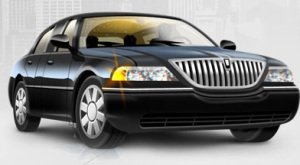Uber is lowering its prices in San Francsico, as the company seeks to remain competitive with an influx of low-cost, on-demand transportation offerings in the city. The startup is also expanding availability of its lower-priced UberX service to all San Francisco users.
In a blog post today, Uber announced that the price of an Uber Black ride will decrease by 10 percent compared to the cost in 2012. That includes both lower time and distance charges, as well as a lower base fare, all of which goes into effect Monday, January 21.
The company is also making traveling outside of the city more appealing, as users will have the same basic rate whether they’re in San Francisco or in the surrounding Bay Area. And since users are now responsible for all bridge and other tolls incurred on a trip, drivers are more likely to go outside the city.
But a cheaper, more simplified price structure wasn’t the only big announcement today. Uber is also making its UberX hybrid fleet available to all San Francisco users. UberX was launched in beta last fall but was only available to select users. The news will make those cars more widely available, but the spike in demand could mean longer waits for rides using the cheaper service.
When Uber first launched in San Francisco, it was nothing short of a revelation. Back then, cabs rarely came when called, and there was no way to know whether they would or not. Finally, for the first time, mobile users here were able to find reliable, on-demand transportation in the city.
But a lot has changed since then, as there is suddenly an influx of alternative on-demand transportation options in San Francisco. Ride-sharing services like Lyft and SideCar now mean that users have the convenience and reliability of Uber at a fraction of the cost. Meanwhile, even cabbies today can be e-hailed through apps like Flywheel.
The end result is that Uber is no longer the only ride in town. Anecdotally, I’ve known some previously hardcore Uber users who now check Lyft or SideCar (or both) for rides before moving on to Uber. (Although Anthony Ha foolishly still gives MORE THAN half his salary to Uber every month.) And with the marketing push behind Flywheel, Uber could soon be faced with being the third or fourth option checked for the tech-savvy in its home market.
So it’s not surprising to see Uber reduce its prices as lower-cost options begin to gain traction in SF. The only question is if it will start doing the same in other markets where it operates, or if it will wait until the competition moves into other cities. Lyft and SideCar are both expected to begin rolling out into new markets aggressively in 2013, and Flywheel has already partnered with cab companies in most major markets.
